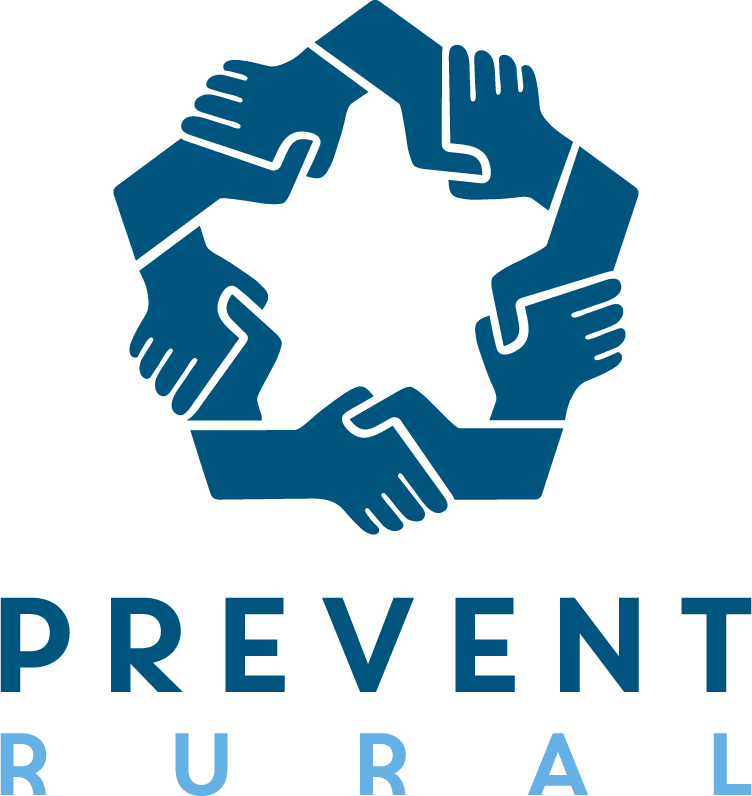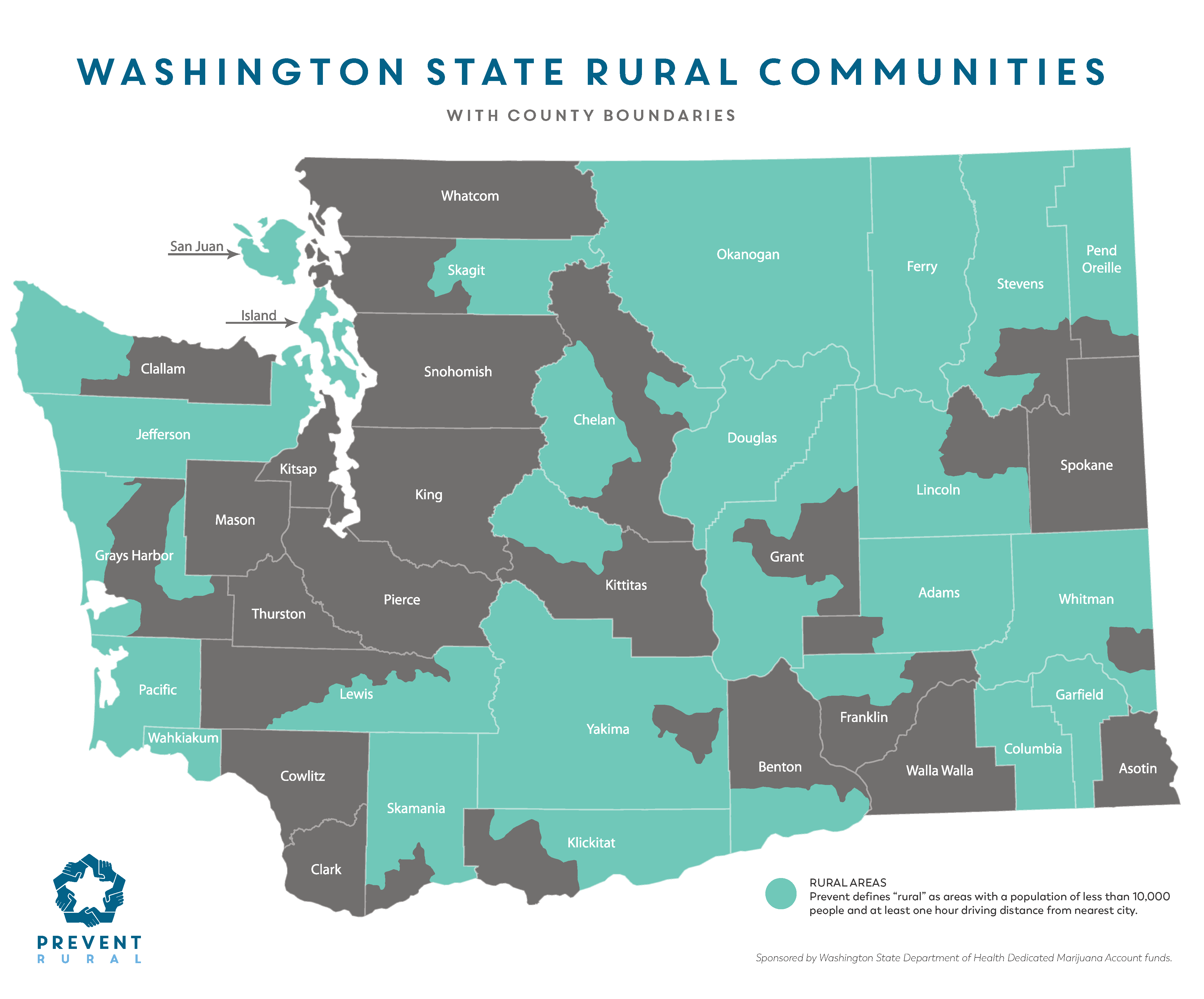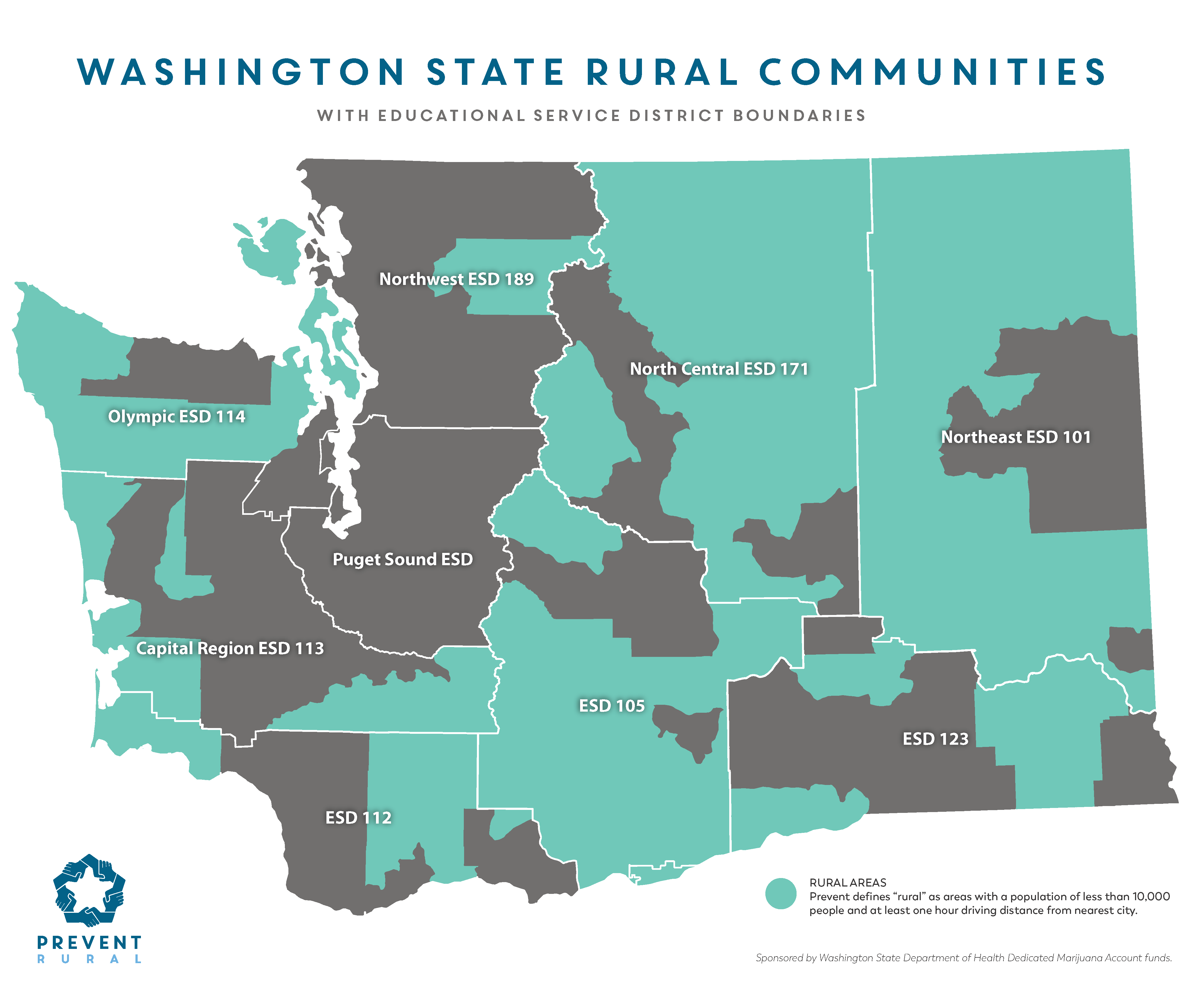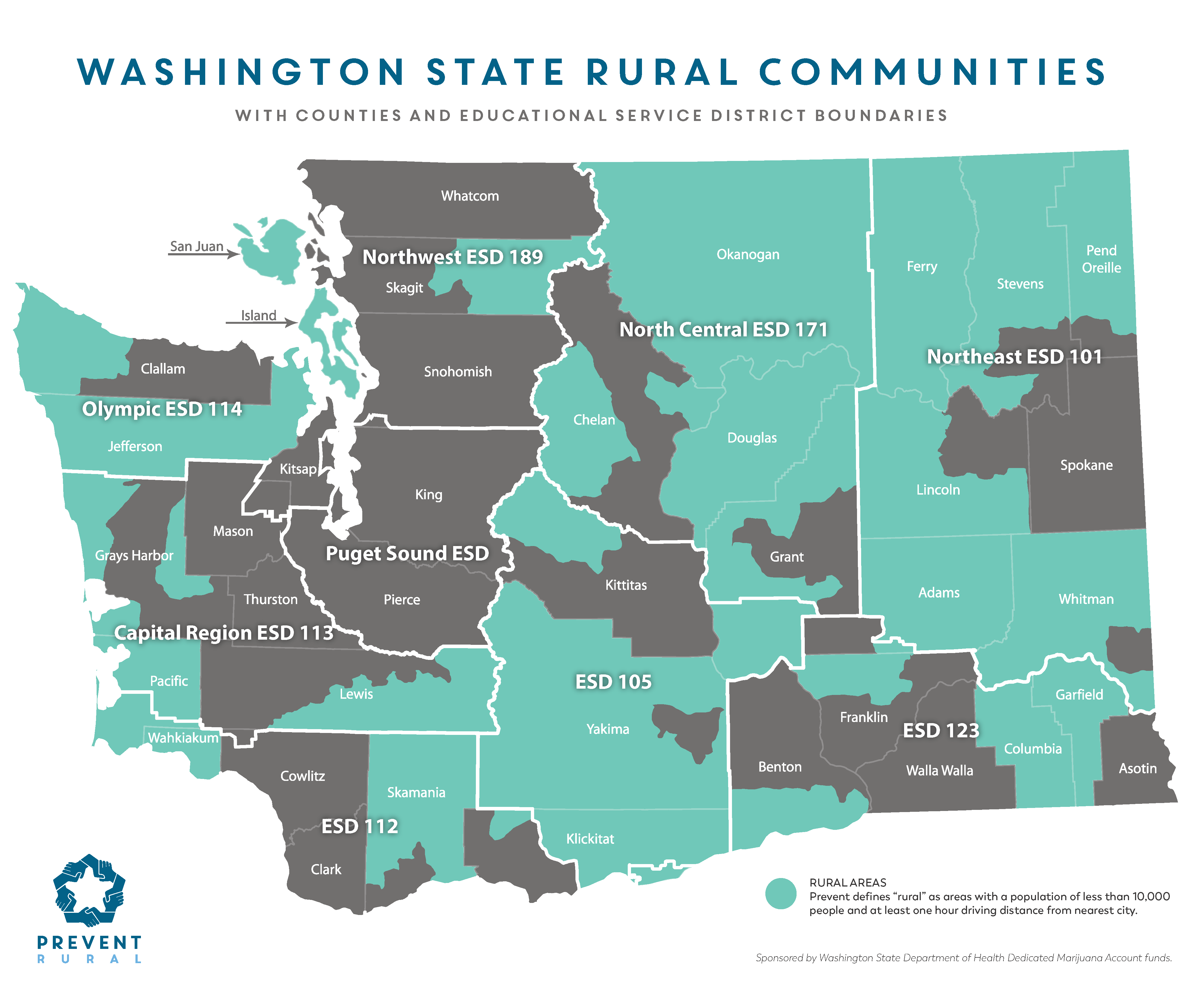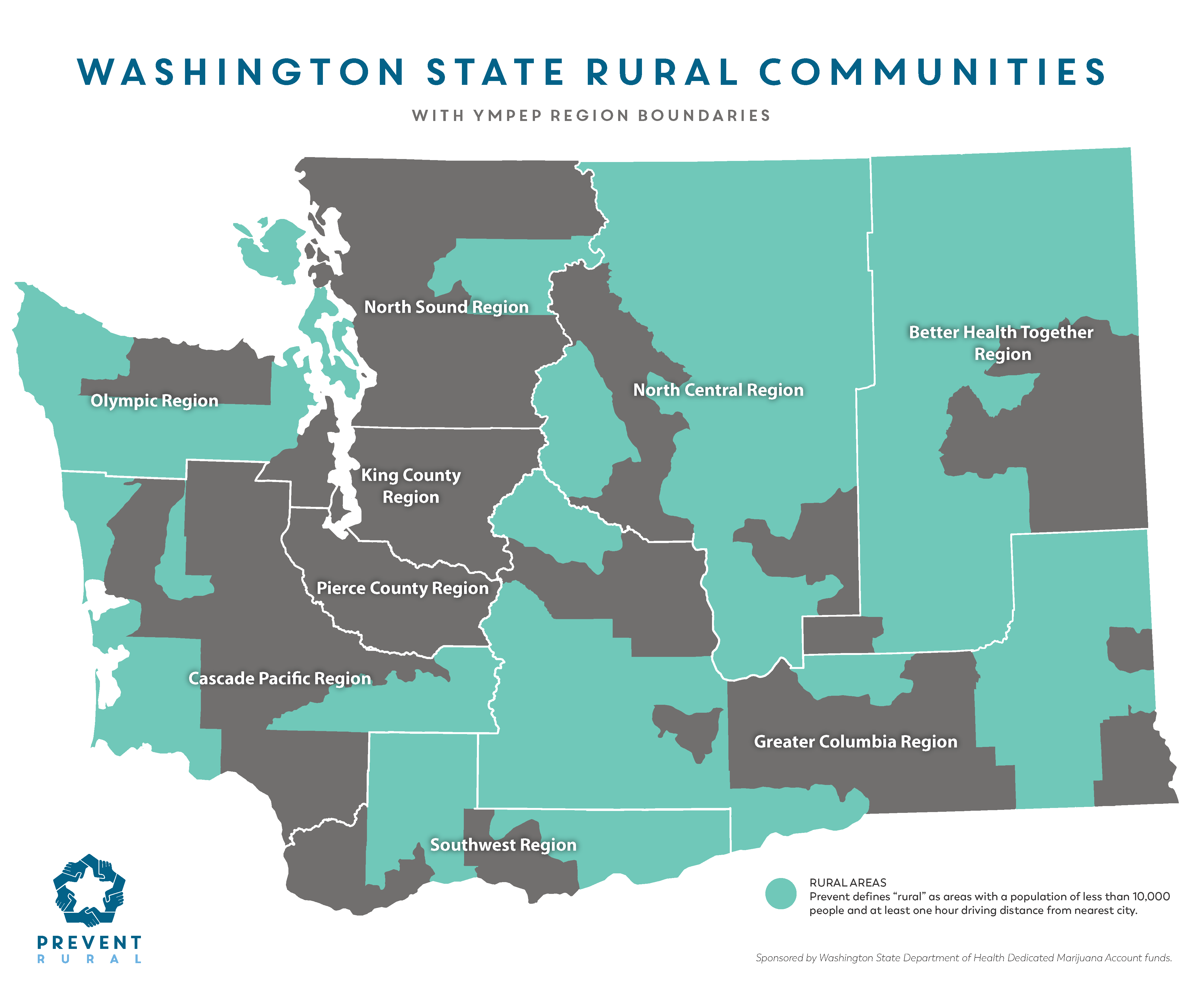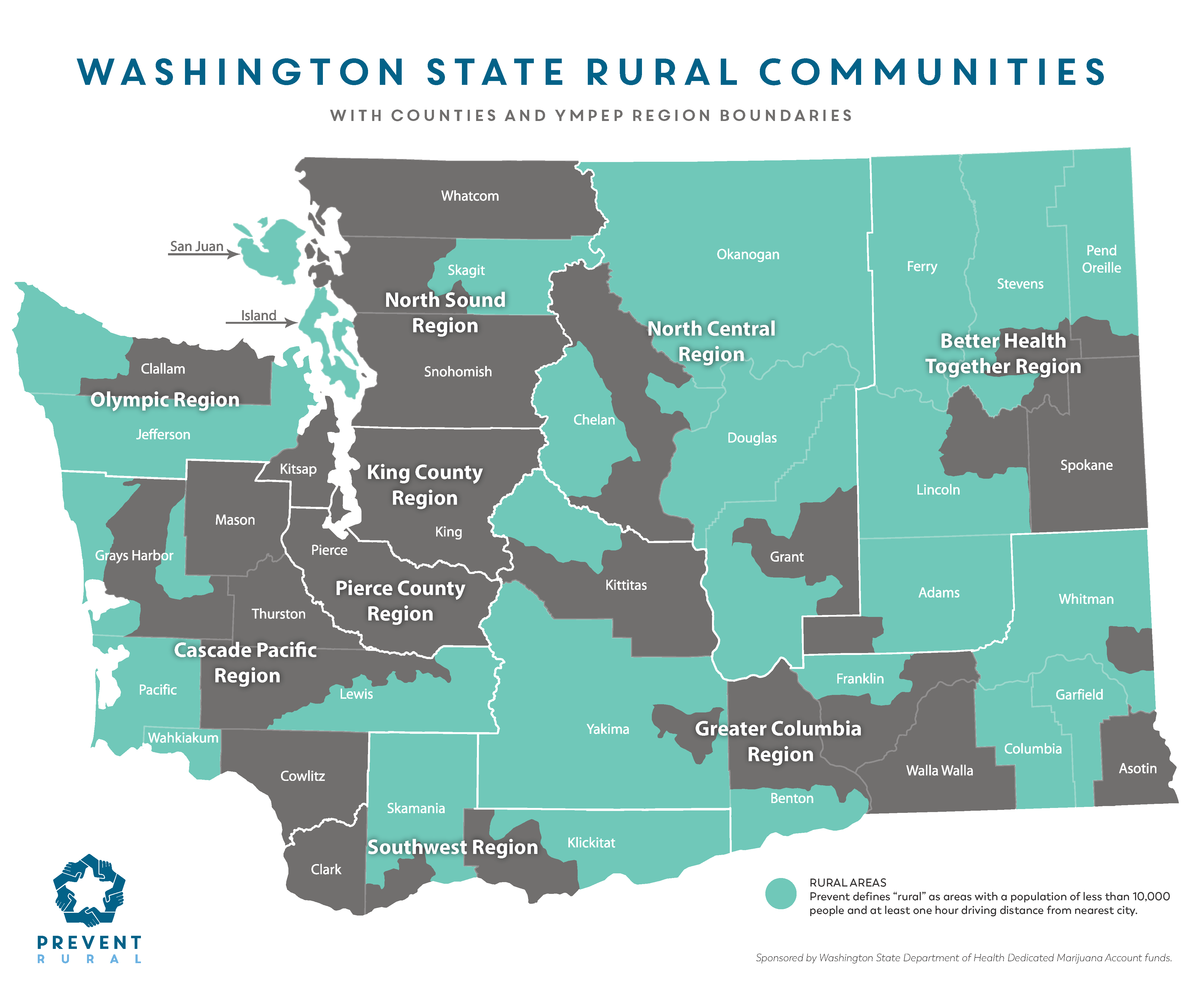The Statewide Rural Network
“A gathering of rural people who support youth in their journey to whole health.” Rural ConferenceRural ToolkitTagline
A gathering of rural people who support youth on their journey to whole health.
Mission
Connecting and supporting rural Washington to build resilience and prevent youth substance misuse.
Vision
Healthy, thriving rural communities free of substance misuse. Together we’ll discover what strategies work in rural areas.
What We Do
- Connect communities during monthly meetings,
- Support partners and coalitions through strategizing and collaboration,
- Develop resources for rural coalitions using an online toolkit,
- Change policies through advocacy and rural equity promotion.
How We Do It
- Rural Network: meets the last Tuesday of every month from 2-3:30 p.m. to implement the Rural Network plan.
- Steering Committee: meets the first Wednesday of every month from 3-4:30 p.m. to evaluate progress and plan towards our goals.
- Affinity Groups: meets as needed to discuss a variety of relevant topics specific to rural communities and to come up with solutions to challenges these communities face.
- Engagement Committee: meets as needed to discuss ways to keep members engaged as well as how to increase capacity of members from diverse backgrounds.
- Equity Book Club: meets as needed in the Fall and in the Spring to read and discuss books that are about equity issues that impact rural communities.
- Office Hours: available the first Wednesday of every month from 1-2 p.m. to offer support, brainstorming space, and technical assistance.
Who We Are
The Rural Network is a group of volunteers and leaders across Washington building resiliency and safeguarding youth. We’re parents, youth, school staff, business owners, medical professionals, law enforcement, government workers, faith-based organizations, and more coming together around the cause of substances misuse prevention in rural Washington.
The Rural Network is an initiative of Prevent, funded by the Commercial Cannabis & Tobacco Prevention Program (YCCTPP) of the Washington State Department of Health. Huge support comes from the fiscal agent, Educational Service District 112 (ESD 112).
Who We Serve
Collectively, we represent the voices of rural populations across Washington. Leaders from rural areas guide our work and create our goals. We’ve identified areas on the map below as our primary population for gathering data, but ultimately we are a resource for:
- Those who self-identify as “rural,”
- Those who might be new to rural areas and want to learn how to integrate,
- Those who reside in more urban or suburban areas but are tasked with serving rural needs and want to learn how to do this appropriately.
7 Core Principles
The 7 Core Principles below guide our work, projects, and culture. They describe how we operate with one another and within the community at large. These principles were written by the Toolkit Workgroup.
Be Positive: We see possibilities through networking and positive growth for our communities.
Be Present: We show up to learn the unique needs of others and our communities.
Be Perceptive: We listen to each other and seek to gain more knowledge to address needs as they arise.
Be Purposeful: We use data to drive solution-focused work that is meaningful in rural communities.
Be Perfected: We continue to improve by valuing the unique contributions we bring together.
Be Proactive: We listen, ask questions and take action.
Be Passionate: We bring vibrance, heart and energy to our collaborations.
Rural areas are indicated in green. For this project scope, rural is defined as an area with a population of less than 10,000 people and with at least 1 hour driving distance to the nearest city/urban center.

